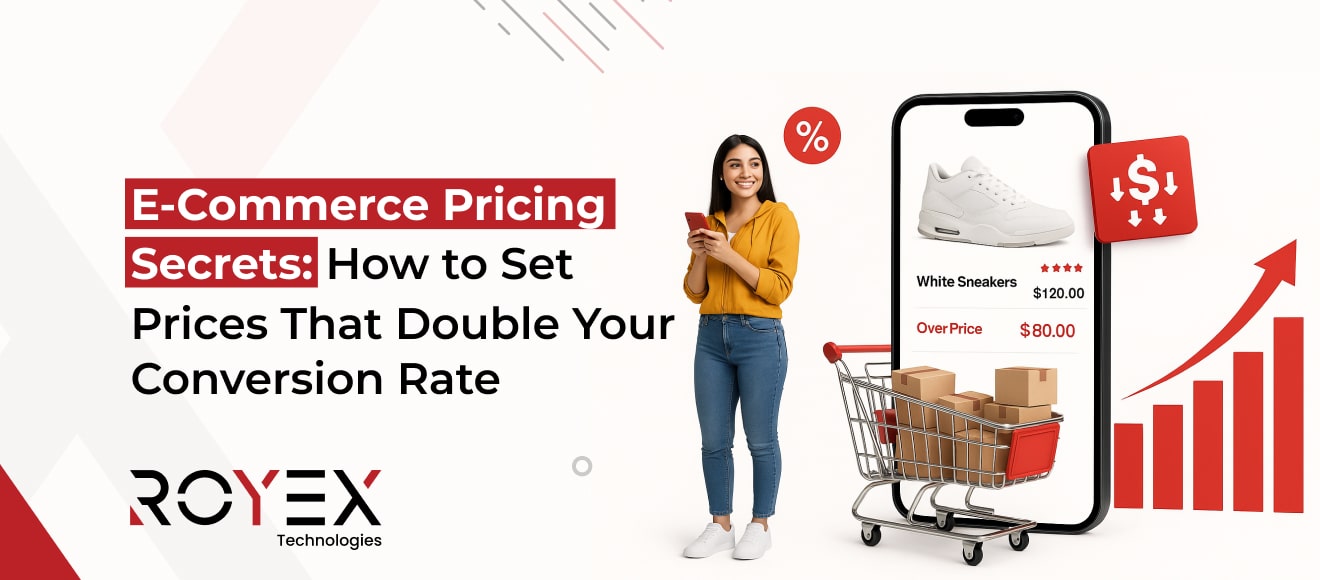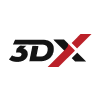
E-Commerce Pricing Secrets: How to Set Prices That Double Your Conversion Rate
In the competitive world of e-commerce, pricing isn’t just a number on a product page — it’s a science, an art, and a strategy all rolled into one. Setting the right price can be the difference between a cart abandonment and a sale, between a first-time buyer and a loyal customer. In fact, pricing strategies have a direct impact on conversion rates, customer lifetime value, and overall profitability. In this comprehensive guide, we will explore the secrets behind effective e-commerce pricing, using data, psychology, and real-world strategies to help you optimize your online store for maximum revenue.
1. The Psychology Behind Pricing
Pricing is more than just cost-plus calculations; it’s a psychological tool that influences consumer behavior. Several key principles play into this:
-
Perceived Value: Customers often judge price in relation to perceived quality. A higher price can signal premium quality, while a lower price may attract bargain hunters but reduce perceived value.
-
Price Sensitivity: Different products and customer segments have varying sensitivity to price changes. Luxury items are less price-sensitive than everyday consumables.
-
Anchoring: Presenting a high-priced product next to a mid-range product can make the mid-range option appear more attractive, increasing its likelihood of purchase.
-
Charm Pricing: Ending prices with .99 or .95 can subtly influence perception, making products feel cheaper. For example, AED 199 feels more affordable than AED 200.
Statistic: Research shows that charm pricing can increase sales by 8–10% on average.
2. Understanding Your Market and Competitors
Before setting prices, you must understand the market dynamics:
-
Competitor Analysis: Track competitor pricing to understand industry standards. Tools like Prisync or Competera can automate this process.
-
Customer Segmentation: Identify your target audience and their willingness to pay. High-income segments may prioritize quality, while cost-conscious shoppers prioritize deals.
-
Local Market Trends: In the UAE, e-commerce growth is projected to reach USD 7.5 billion by 2024, with consumers increasingly shopping online via mobile. Understanding these trends helps tailor your pricing strategy.
Statistic: A 2023 survey revealed that 65% of UAE online shoppers compare prices across multiple websites before purchasing.
3. Pricing Models That Drive Conversions
Choosing the right pricing model is crucial for boosting conversion rates:
-
Cost-Plus Pricing: Base your price on production cost plus a markup. While simple, it ignores customer perception.
-
Value-Based Pricing: Set prices based on perceived value rather than cost. This is highly effective for unique or premium products.
-
Competitive Pricing: Adjust your pricing to match or slightly undercut competitors.
-
Tiered Pricing: Offer multiple versions of a product at different price points to capture more segments.
Statistic: Businesses using value-based pricing report 20–30% higher profit margins than cost-plus pricing.
4. Dynamic Pricing and Real-Time Adjustments
Dynamic pricing involves changing prices based on demand, inventory, competitor pricing, or customer behavior:
-
Time-Based Pricing: Offer discounts during specific periods to increase sales during slow hours.
-
Demand-Based Pricing: Raise prices for high-demand items or during peak seasons.
-
Customer Behavior-Based Pricing: Use AI to personalize prices based on browsing history or purchase patterns.
Statistic: Dynamic pricing can increase revenue by up to 25% when implemented effectively.
5. Bundling, Discounts, and Promotions
Strategic discounts and bundling can increase average order value (AOV) and conversions:
-
Product Bundling: Combine complementary products and offer a small discount, encouraging larger purchases.
-
Volume Discounts: Incentivize bulk purchases to increase AOV.
-
Flash Sales & Limited-Time Offers: Create urgency to drive immediate purchases.
Statistic: Bundling can boost AOV by 10–30%, depending on the product category.
6. Price Anchoring and Decoy Products
Anchoring is a cognitive bias where consumers rely heavily on the first piece of information they see:
-
High Anchor Product: Display a high-priced item first to make mid-range products appear more affordable.
-
Decoy Pricing: Introduce a third, less attractive option to nudge customers toward the desired product.
Statistic: Effective anchoring can increase sales of the targeted product by 15–20%.
7. Subscription Pricing and Loyalty Programs
Subscriptions and loyalty programs encourage repeat purchases and reduce customer acquisition costs:
-
Subscription Pricing: Monthly or annual plans create predictable revenue streams.
-
Loyalty Points & Rewards: Encourage repeat purchases with points, discounts, or early access to products.
Statistic: Subscription e-commerce businesses see 30–50% higher customer retention rates than non-subscription models.
8. Psychological Pricing Tactics
Several psychological pricing strategies can subtly influence purchasing behavior:
-
Charm Pricing: Ending prices in .99 or .95 increases perceived affordability.
-
Prestige Pricing: Using round numbers or higher prices signals luxury and quality.
-
Odd-Even Pricing: Odd numbers suggest bargains, even numbers suggest premium products.
-
Anchoring: Presenting multiple pricing options to guide decisions.
Statistic: Companies that implement psychological pricing tactics report an increase in conversion rates of 7–15%.
9. Monitoring, Analytics, and Iteration
To optimize pricing, ongoing monitoring is essential:
-
Conversion Rate Tracking: Use tools like Google Analytics, Hotjar, or Mixpanel to track purchase behavior.
-
A/B Testing: Test different price points, bundles, and promotions to find optimal pricing.
-
Inventory & Supply Chain Monitoring: Adjust pricing dynamically based on stock levels and demand trends.
Statistic: Businesses that actively A/B test pricing see an average revenue increase of 12–18%.
10. Common Pricing Mistakes to Avoid
Avoid these pitfalls that can erode conversions and profit:
-
Ignoring Market Research: Pricing without understanding competitors or consumer behavior leads to lost sales.
-
Overcomplicating Pricing: Too many options confuse customers.
-
Frequent Price Changes: Sudden fluctuations can reduce trust.
-
Neglecting Profit Margins: Low prices may drive traffic but erode profitability.
Statistic: About 60% of small e-commerce businesses report losses due to poor pricing strategies.
11. Case Studies and Statistics
-
Fashion E-Commerce in UAE: A UAE fashion retailer implemented dynamic pricing and bundling. Conversion rates increased from 2.8% to 5.2%, and AOV rose by 18%.
-
Electronics Store: Using value-based pricing and anchoring, an electronics e-store increased sales of mid-range laptops by 25% without lowering profit margins.
-
Subscription Box Service: Adding loyalty points and subscription tiers increased repeat purchases by 35%, contributing to 40% higher LTV.
Additional Statistics:
-
Average cart abandonment globally is 69.57%, indicating the need for pricing optimization combined with psychological triggers.
-
54% of online shoppers abandon a cart due to price-related reasons.
-
Offering free shipping above a threshold can increase AOV by 30%.
12. Why Choose Royex for E-Commerce Development
Optimizing pricing requires more than theory — you need the right e-commerce platform to implement, test, and scale these strategies. Here’s why Royex Technologies is the ideal partner:
-
Customizable Pricing Engines: Royex builds platforms that support dynamic pricing, tiered pricing, bundles, and subscription models out of the box.
-
Analytics-Driven Insights: Integrate advanced analytics to monitor conversion rates, AOV, LTV, and customer segments in real-time.
-
Local Market Expertise: Royex understands UAE consumer behavior, payment preferences, and marketplace integration (Amazon.ae, Noon) for maximum reach.
-
Mobile-First Optimization: With most UAE shoppers using smartphones, Royex ensures fast, intuitive, and conversion-optimized mobile experiences.
-
Scalable Architecture: From small startups to large e-commerce enterprises, Royex platforms scale with your business while maintaining speed and reliability.
-
Conversion-Focused UX: Royex combines pricing psychology with UX/UI best practices to maximize sales without eroding brand trust.
By combining technology, market knowledge, and strategic design, Royex helps UAE e-commerce businesses implement pricing strategies that double conversion rates while maintaining profitability.
Established in 2013, Royex Technologies is a leading E-Commerce Web Design Company in Dubai that provides innovative solutions for small, medium, and large-scale companies. We specialize in responsive web development, mobile app development, CRM integration, AI solutions for website & mobile applications, and many more. Our extensive experience in mobile app development will help you to take your business to a high level.
Conclusion
E-commerce pricing is a sophisticated blend of psychology, data, and operational strategy. From understanding your market to implementing dynamic pricing, bundles, and subscription models, every decision affects your conversion rate, AOV, and long-term profitability. By leveraging advanced analytics, testing, and local market insights, businesses can uncover hidden opportunities to increase revenue without slashing margins.
Partnering with Royex Technologies ensures that your e-commerce platform is not just functional but profit-driven, capable of implementing pricing strategies that truly convert, while scaling with your business needs in the UAE market.





